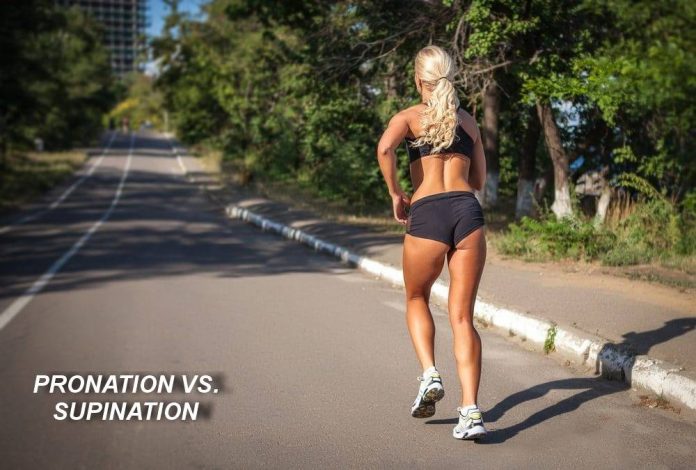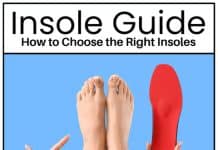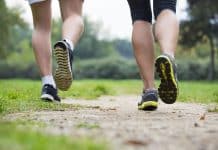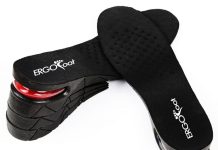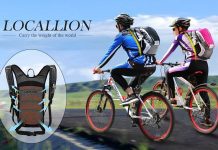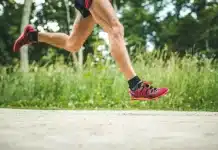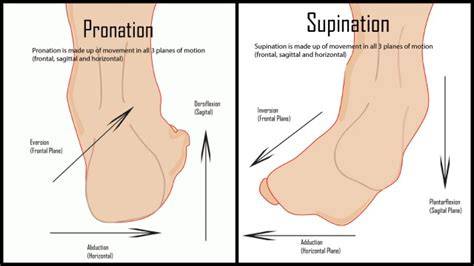
Pronation and Supination are commonly used in sports and medicine to describe foot and arm movements. Pronation is the natural motion of the foot during walking and running, where the foot rolls inward.
This movement helps to absorb shock and distribute weight evenly throughout the foot. Supination, on the other hand, is the opposite of pronation, where the foot rolls outward.
Understanding the difference between pronation and Supination is essential for athletes, runners, and anyone who spends much time on their feet. Overpronation, where the foot rolls too far inward, can lead to various foot problems, including plantar fasciitis, shin splints, and knee pain.
Underpronation, or Supination, can also lead to issues such as ankle sprains and stress fractures. By understanding their gait pattern, individuals can choose the right shoes and adjust their form to prevent injuries.
This article will explore the difference between pronation and Supination in more detail. We will discuss the anatomy of the foot and arm, the causes of Overpronation and underpronation, and the potential associated injuries.
We will also provide tips on identifying your gait pattern and choosing the right shoes to support your feet and prevent injuries.
Understanding Pronation
Pronation is a natural foot movement that occurs during walking and running. It refers to the inward roll of the foot as the arch flattens to absorb shock when the foot strikes the ground.
Normal pronation is when the foot rolls inward about 15% and distributes the weight evenly across the foot. This helps to provide stability and cushioning. However, some people overpronate or underpronate, leading to foot problems.
Overpronation occurs when the foot rolls inward excessively, causing the arch to collapse and the foot to flatten. This can result in various issues, including shin splints, plantar fasciitis, and flat feet. It can also cause problems in the knees and hips due to the misalignment of the lower body.
On the other hand, underpronation, also known as Supination, occurs when the foot rolls outward excessively. This puts more pressure on the outside of the foot and can lead to issues such as ankle sprains, calf strains, and high arches.
It is essential to have proper form and wear appropriate footwear to prevent foot problems caused by Overpronation or underpronation. Shoes with good arch support and cushioning can help to correct Overpronation, while shoes with more flexibility and a curved shape can help to correct underpronation.
Understanding pronation is crucial for maintaining healthy feet and preventing foot problems. Normal pronation is necessary for proper shock absorption and stability, while Overpronation and underpronation can lead to various issues. Wearing proper footwear and maintaining good form can help to correct these issues and prevent foot problems in the long run.
Plantar Fasciitis Feet Insoles Arch Supports Orthotics Inserts Relieve Flat Feet, High Arch, Foot Pain Mens 11-11 1/2 | Womens 13-13 1/2
Orthotic Inserts 3/4 Length, High Arch Support Foot Insoles for Over-Pronation Plantar Fasciitis Flat Feet Heel Pain Relief Shoe Inserts for Running Sports Men and Women, L|Men's 9-11, Women's 10-12
$18.88 in stock
Understanding Supination
Supination is a natural foot movement that occurs during walking or running. It is the opposite of pronation, which is the inward rolling of the foot. Supination occurs when the body’s weight is placed on the outside of the foot, causing the foot to roll outward. This movement is essential for shock absorption and stability during physical activity.
Supination is most commonly associated with high arches, which can cause the foot to roll outward excessively. This is known as over-supination or underpronation. Individuals with high arches may also experience heel lift, leading to overuse injuries in the calf, ankle, and foot.
Supination can also occur as a result of an injury or ankle sprain. In these cases, Supination is often accompanied by inversion, which is the inward rolling of the ankle. This can cause pain and instability in the ankle joint and may require medical attention.
To prevent over-supination and associated injuries, wearing shoes that provide adequate support and cushioning is essential. Shoes with a neutral or slightly curved sole can help encourage a natural gait and prevent excessive foot rolling. Exercises that strengthen the foot and ankle muscles can help improve stability and prevent injury.
Overall, Supination is a natural movement of the foot that is important for shock absorption and stability during physical activity. However, over-supination can lead to overuse injuries and other complications. By understanding the causes and symptoms of Supination, individuals can take steps to prevent injury and maintain their foot health.
Pronation vs. Supination: Key Differences
Pronation and Supination are two terms used to describe the natural movements of the feet and arms. Pronation refers to the inward rolling of the foot during movement, while Supination refers to the outward rolling of the foot.
During normal pronation, the foot rolls slightly inward to distribute the body’s weight evenly across the foot. This motion helps to absorb shock and provide stability during movement. However, Overpronation occurs when the foot rolls too far inward, causing excessive stress on the ankle and outer toes. This can lead to plantar fasciitis, shin splints, and knee pain.
On the other hand, Supination occurs when the foot rolls too far outward, placing excessive stress on the ankle and inner toes. This can also lead to ankle sprains, Achilles tendonitis, and IT band syndrome.
It is important to note that everyone’s feet are different, and some individuals may naturally overpronate or over-supinate. This can be determined by examining the arch of the foot. Individuals with flat feet tend to overpronate, while those with high arches supinate over.
Regarding arm movements, Supination and pronation refer to the rotation of the forearm. During Supination, the palm faces upward, while the palm faces downward during pronation. These movements are essential for everyday activities such as grasping objects and turning doorknobs.
In summary, pronation and Supination are natural movements of the feet and arms that play an essential role in everyday activities. Understanding the differences between normal pronation and over-supination Overpronation can help individuals choose the proper footwear and prevent injuries.
PCSsole Orthotic Arch Support Shoe Inserts Insoles for Flat Feet,Feet Pain,Plantar Fasciitis,Pronation For Men and Women
$14.32 in stock
Dr. Foot's 3/4 Length Orthotics Insoles - Best Insoles for Corrects Over-Pronation, Fallen Arches, Fat Feet - Plantar Fasciitis, Heel Spurs and Other Foot Conditions -1 Pair (S - W7-8.5 | M5.5-7)
Impact on Sports and Exercise
Pronation and Supination can significantly impact sports and exercise, particularly when it comes to running. Both can affect how a person runs, leading to pain, injury, and other issues.
Running
Pronation and Supination can affect a person’s running gait or how they run. Overpronation occurs when the foot rolls too far inward, while Supination occurs when the foot rolls too far outward. Both can lead to overuse injuries, such as shin splints, knee pain, and plantar fasciitis.
Choosing the right running shoes is one way to address pronation or Supination. Motion-control shoes can help prevent Overpronation, while cushioned shoes can help prevent Supination. It’s important to get fitted for running shoes by a professional to ensure the right fit and support.
Exercise
Pronation and Supination can also affect other forms of exercise. For example, weightlifting requires a stable base, which can be affected by Overpronation or Supination. It’s essential to strengthen the muscles in the feet and ankles to help prevent injury.
Stretching can also help prevent injury and improve flexibility. Physical therapists can provide exercises and stretch to help address pronation or Supination and prevent injury.
Sports
Pronation and Supination can affect a variety of sports, not just running. For example, basketball players need to be able to change direction quickly, which can be affected by Overpronation or Supination. Football players need a stable base for tackling and blocking, which can also be affected.
It’s essential to address pronation or Supination to prevent injury and improve performance. This may involve strengthening muscles, choosing shoes, and working with a physical therapist.
Overall, pronation and Supination can significantly impact sports and exercise. It’s essential to be aware of the risks and take steps to prevent injury.
Role of Footwear in Pronation and Supination
Footwear is essential in supporting the feet during movement and preventing injuries caused by Overpronation or Supination. Different shoes offer varying levels of stability, cushioning, and motion control, which can affect how the foot moves while walking or running.
Overpronation occurs when the foot rolls inward excessively, putting pressure on the arch and causing the foot to flatten. This can lead to discomfort, pain, and injuries like shin splints. Motion-control or stability shoes are designed to help correct Overpronation by providing a firmer midsole and additional support around the heel and arch.
On the other hand, Supination, also known as underpronation, occurs when the foot rolls outward, putting more pressure on the outer edge of the foot. This can cause pain and discomfort in the ankle, foot, and leg. Neutral shoes or cushioning shoes with a softer midsole can help absorb shock and reduce the pressure on the outer edge of the foot.
Orthotic inserts can also help correct pronation and Supination by providing additional foot support and cushioning. They can be handy for individuals with flat feet or high arches.
New Balance is a famous brand offering a wide range of shoes for different foot types and pronation levels. Their shoes are known for their stability, cushioning, and motion control features, making them popular for runners and athletes.
In summary, choosing the proper footwear is crucial in preventing injuries caused by Overpronation or Supination. Motion-control shoes or stability shoes can help correct Overpronation. In contrast, neutral or cushioning shoes can help reduce the pressure on the outer edge of the foot caused by Supination. Orthotic inserts can also provide additional support and cushioning to the feet.
Plantar Fasciitis Feet Insoles Arch Supports Orthotics Inserts Relieve Flat Feet, High Arch, Foot Pain Mens 11-11 1/2 | Womens 13-13 1/2
Orthotic Inserts 3/4 Length, High Arch Support Foot Insoles for Over-Pronation Plantar Fasciitis Flat Feet Heel Pain Relief Shoe Inserts for Running Sports Men and Women, L|Men's 9-11, Women's 10-12
$18.88 in stock
Medical Implications and Treatments
Pronation and Supination can have medical implications that affect the feet, ankles, knees, hips, and even the lower back. Pain and injury can result from Overpronation or Supination, and it is essential to seek medical attention if these issues arise.
Podiatrists are trained to diagnose and treat issues related to pronation and Supination. They may recommend orthotics, motion-control shoes, stability shoes, or other footwear to help correct the issue. Orthotic inserts can also be custom-made to provide additional support and cushioning.
Overpronation can lead to plantar fasciitis, shin splints, bunions, and knee pain. Physical therapy can help strengthen the muscles and improve flexibility, reducing the risk of these injuries. Orthotics and motion-control shoes can also help to correct the issue and reduce the risk of injury.
Conversely, Supination can lead to Achilles tendonitis, knee pain, and lower back pain. Motion-control and stability shoes can help correct the issue and reduce the risk of injury. Physical therapy can also be beneficial in improving flexibility and strengthening the muscles.
It is important to note that not all running injuries are caused by pronation or Supination. Other factors, such as overuse, poor form, or inadequate footwear, can also contribute to injuries. If pain or injury persists, seeking medical attention from a podiatrist or physical therapist is essential.
In summary, pronation and Supination can have medical implications that affect the feet, ankles, knees, hips, and lower back. Treatment options include orthotics, motion-control shoes, stability shoes, physical therapy, and custom-made orthotic inserts. Seeking medical attention is essential to prevent further injury and reduce pain.
PCSsole Orthotic Arch Support Shoe Inserts Insoles for Flat Feet,Feet Pain,Plantar Fasciitis,Pronation For Men and Women
$14.32 in stock
Dr. Foot's 3/4 Length Orthotics Insoles - Best Insoles for Corrects Over-Pronation, Fallen Arches, Fat Feet - Plantar Fasciitis, Heel Spurs and Other Foot Conditions -1 Pair (S - W7-8.5 | M5.5-7)
Pronation and Supination in Upper Body
Pronation and Supination occur in the upper body, specifically in the forearm, wrist, and elbow joints. The palm rotates posteriorly in pronation, causing the radius bone to cross diagonally over the ulna bone.
This movement is also known as the “palm down” position. In Supination, the palm rotates anteriorly, causing the radius bone to parallel the ulna bone. This movement is also known as the “palm up” position.
The forearm’s rotation ability is essential for everyday activities such as writing, typing, and carrying objects. However, overuse of the forearm muscles can lead to conditions such as tennis elbow and carpal tunnel syndrome.
Wearing splints or braces can help alleviate these conditions by reducing the strain on the forearm muscles.
The wrist joint is also involved in pronation and supination movements. Flexibility in the wrist joint is essential for performing daily tasks such as opening jars and turning doorknobs. The median nerve, which runs through the wrist joint, can become compressed due to repetitive motions, leading to carpal tunnel syndrome. Stretching exercises and ergonomic equipment can help prevent this condition.
The “OK” sign and grip strength testing are examples of how pronation and supination movements can be assessed. To make the “OK” sign, the individual must touch the tip of the index finger to the tip of the thumb while keeping the other fingers straight. In grip strength testing, the individual must squeeze a device with their hand, measuring the force they can generate.
In conclusion, pronation and Supination movements are essential for upper body function. The forearm, wrist, and elbow joints perform everyday tasks. However, overuse of these joints can lead to conditions such as tennis elbow and carpal tunnel syndrome. Stretching exercises, ergonomic equipment, and wearing splints or braces can help alleviate these conditions.
Does this seem like something which has happened to you lately?
You searched for a vast, essential running shoe for your local running shop. Nothing elaborate.
You looked at all the shoes on the shoe wall and were amazed at the number of high shoes.
Shortly, a shop associate asks if you need help; and when you say yes, walk or jog either around the shop or on a treadmill; you were probably asked to take off your shoes and socks.
One of the specialists carefully scrutinizes your stride on the shoe flooring. He then pronounced that you’re either a supinator or a pronator. I’m a what?
Pronation is not wrong, and it’s natural. Also, It happens when the foot contacts the ground.
After that, the arch falls—pronates— acts as your body’s shock absorber.
Being a real pronator will not make you a wrong person; it does make you a poor runner!
Almost everyone pronates to some extent.
Nevertheless, all individuals are different, so some pronounce less or more than others.
If your feet didn’t pronate, your body wouldn’t be able to absorb the impact of leaping, running, or walking.
The reverse of pronation is not pronation. Although you may hear some runners who promise to be supinators, that’s a misnomer.
Moreover, Just to some level, everyone supinates like pronation.
You must supinate for your feet to push off and go into the next measure.
Without becoming overly technical, when you supinate, the bones in the foot form a stiff lever;
Which needs to push off into the next measure in the walking or running stride.
Read Next – Pronation: what is it and what does it to my body
Are you a pronator or a supinator?
When we run or walk, we move to a pronated position to absorb the impact of contacting the earth and landsupinatedn.
From there, the foot subsequently goes into a supinated closing period, which results in the foot.
So Supination and pronation are only evil. Both are undoubtedly essential. What’s so bad is when the foot pronates too little or too much.
First, an excessive amount of pronation is termed Overpronation.
This happens when the arch falls at a too-great angle or remains overly long through the gait cycle.
Overpronation is not unusual. You must have thought, happening in over half of the running people.
Recommendable: Do I overpronate or supinate? (Complete Guide)
In the video, it’s pretty straightforward. You can’t see without a video why you must have your running pace examined by a specialist at your favorite running shoe.
When Overpronation is left unchecked, energy is even worse and lost; torque is carried right up the legs and is set on the lower part of the body.
Uncontrolled Overpronation is most commonly linked with a wide range of lower leg injuries like hip pain, plantar fasciitis, Achilles tendonitis, hamstring pulls, and shin splints. That’s why if you overpronate and wear the wrong shoe (i.e., an unsupportive one), there’s a great chance of harm.
Don’t despair. While still enabling the feet to pronate satisfactorily and function as shock absorbers, many of today’s modern running shoes are designed to reduce the rate of Overpronation.
These shoes are tagged as either support, stability, or motion-control shoes.
The outcome is the same, though the terms are distinct:
These shoes minimize the harms connected with that and hence, will reduce the amount of Overpronation.
Read Next – Top Cross Training Shoes for Pronation
PCSsole Orthotic Arch Support Shoe Inserts Insoles for Flat Feet,Feet Pain,Plantar Fasciitis,Pronation For Men and Women
$14.32 in stock
Dr. Foot's 3/4 Length Orthotics Insoles - Best Insoles for Corrects Over-Pronation, Fallen Arches, Fat Feet - Plantar Fasciitis, Heel Spurs and Other Foot Conditions -1 Pair (S - W7-8.5 | M5.5-7)
Most running brands offer using various apparatus shoes that reduce Overpronation.
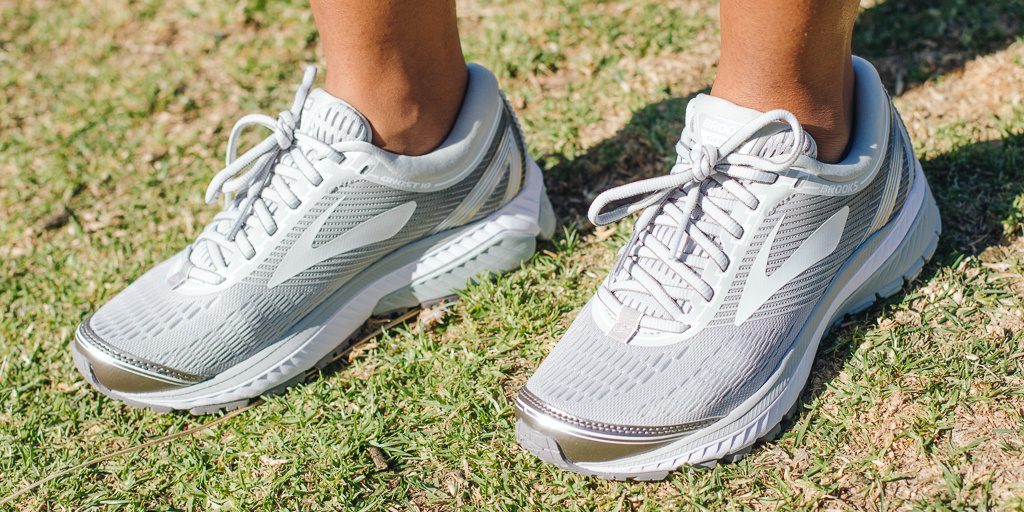
The two-density midsole is the most common, which includes a more vital part of midsole foam on the medial (inner) side to reduce Overpronation.
Brands also use internal and external heel apparatus to stabilize the rearfoot at heel strike and crash pads in the heel to impede the pronation rate.
At Mizuno, we assault Overpronation in a completely different manner.
Rather than use multi-density midsoles to reduce Overpronation, all Mizuno running shoes use our exclusive Wave technology, stabilizing and cushioning the foot.
Mizuno running shoes are designed to accommodate different foot gaits using distinct Waves Plates (different sizes, shapes, and stuff), including Overpronation, so the shoe adapts to your unique foot and running fashion.
For instance, our support shoes, such as Wave Paradox.
The Wave Inspire uses a Wave plate—the Fan Wave, which reduces the quantity of Overpronation to a safe, satisfactory degree and stabilizes the foot.
Overpronation at the opposite end of the spectrum is a standard call over Supination or Supination.
In actuality, this state should be termed underpronation. This is when the foot is stiff and relatively rigid and doesn’t bend, flex, or pronate enough.
The runner under pronates frequently has a foot with a high arch (or no arch), which puts more weight on the foot’s outer edge.
It doesn’t absorb shock since the foot is generally so stiff.
The running shoe will run on the outside edge of the foot (usually on the midfoot or forefoot) and doesn’t roll inward enough (pronate) like a standard foot does to absorb impact.
Harms often related to an under-pronating foot are incredibly tight Achilles tendons, knee problems, ankle sprains, stress fractures, and tight hip muscles.
Read Next – Dr. Foot Supination and Over-Pronation Shoe Inserts
Do insoles help Overpronation?
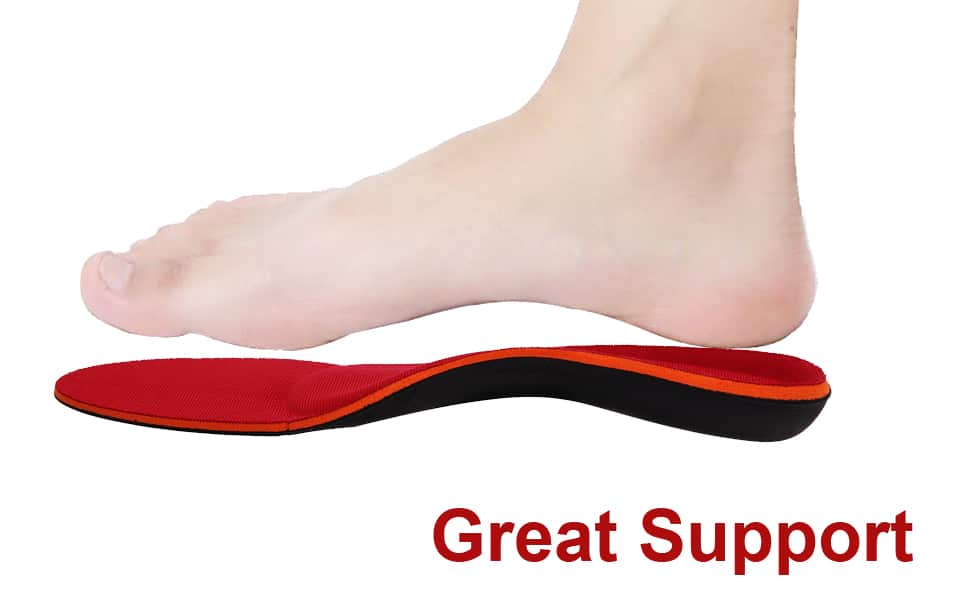
Authentic underpronation is not as common as Overpronation (less than 10 percent of the running people).
But getting the correct shoe kind is equally as significant.
For a runner under pronates, the shoe’s shock absorption (i.e., cushioning) qualities are crucial; since the foot doesn’t do a good enough job of consuming that impact independently.
The shoes that work best for this running shoe are frequently called neutral, cushioned shoes.
These shoes stress flexibility and cushioning without limiting the foot’s movement with internal or outside apparatus.
Our family of neutral shoes; uses the Parallel Wave, an entirely distinct Wave shape from the support shoes.
The Parallel Wave does add some built-in support while supporting natural foot motion.
Most runners have” pronate neither too much nor too little and regular” arches.
These running shoes are blessed because they can wear pretty much wear; whatever shoe fits nicely and feels comfortable with no pronation concerns.
Read Next – Reebok Shoes For Overpronation
What Is Pronation and What It Means For Runners
Are you an overpronator or underpronator, or do you only have a standard foot type that pronates an okay number? Sadly, there’s no dependable method for the typical runner to discover this.
Contrary to popular belief, shoe wear isn’t a trusted indicator. The best method to determine your foot type/pace (and hence, the kind of shoe you need) is to go to a specialty running shop; and have a shoe pro watch you run.
Many shops will make a video of you while running and offer a treadmill. Suppose you underpronate or overpronate or pronate generally. In that case, this will be instantly obvious (more so if a video is made), and the shoe specialist will fit you in the appropriate shoe.
Ask around if you don’t know of a shop!
Most runners can readily recommend the best shop with the best-fit specialists, which can get you safe and gratifying running unique to you in your way.
The secret to determining your foot type would be to attend a reputable running shop with specialists in fitting running shoes in the appropriate shoes.
Ask around if you don’t know of a shop. Most runners can readily recommend the best shop with the top burst specialists.
Read Next – Best Running Shoes for Overpronation
Plantar Fasciitis Feet Insoles Arch Supports Orthotics Inserts Relieve Flat Feet, High Arch, Foot Pain Mens 11-11 1/2 | Womens 13-13 1/2
Orthotic Inserts 3/4 Length, High Arch Support Foot Insoles for Over-Pronation Plantar Fasciitis Flat Feet Heel Pain Relief Shoe Inserts for Running Sports Men and Women, L|Men's 9-11, Women's 10-12
$18.88 in stock
Symptoms PRONATION VS SUPINATION
Overpronation vs. Supination may cause many ailments that affect the foot, ankle, knees, hips, and back.
Some of the more common symptoms of Overpronation vs. (and) Supination are listed below.
- Plantar fasciitis and arch pain
- Ankle sprains
- Shin splints
- Achilles tendonitis
- Heel pain
- Flat feet
- Hip pain
- Back pain
Maximum support with cushioning (overpronators): Wave Paradox
Maximum cushioning (for underpronators wanting additional pillow): Wave Enigma, Wave Creation, and Wave Prophecy
Average cushioning (for underpronators): Wave Rider and Wave Sayonara
Lightweight with cushioning (for underpronators looking for a lighter alternative): Wave Hitogami
Read Next – Best Running Shoes for Pronation and Low Arches
Pronation vs. Supination, a straightforward explanation
Plantar Fasciitis Feet Insoles Arch Supports Orthotics Inserts Relieve Flat Feet, High Arch, Foot Pain Mens 11-11 1/2 | Womens 13-13 1/2
Orthotic Inserts 3/4 Length, High Arch Support Foot Insoles for Over-Pronation Plantar Fasciitis Flat Feet Heel Pain Relief Shoe Inserts for Running Sports Men and Women, L|Men's 9-11, Women's 10-12
$18.88 in stock
PCSsole Orthotic Arch Support Shoe Inserts Insoles for Flat Feet,Feet Pain,Plantar Fasciitis,Pronation For Men and Women
$14.32 in stock
Dr. Foot's 3/4 Length Orthotics Insoles - Best Insoles for Corrects Over-Pronation, Fallen Arches, Fat Feet - Plantar Fasciitis, Heel Spurs and Other Foot Conditions -1 Pair (S - W7-8.5 | M5.5-7)
FitFeet Orthotic Inserts 3/4 Length, High Arch Support Foot Insoles for Over-Pronation, Plantar Fasciitis, Flat Feet - Shoe Inserts for Walking, Running Men and Women
Plantar Fasciitis Arch Support Insoles for Men and Women Shoe Inserts - Orthotic Inserts - Flat Feet Foot - Running Athletic Gel Shoe Insoles - Orthotic Insoles for Arch Pain High Arch - Boot Insoles
Dr. Foot's Supination & Over-Pronation Corrective Shoe Inserts, Medial & Lateral Heel Wedge Insoles for Foot Alignment, Knee Pain, Bow Legs, Osteoarthritis - 3 Pairs (Black)
pedag Correct Plus | German Handmade 3/4 Length Wedge for Oversupinators, Vegetable Tanned Leather Top Rubber Orthotic Footbed, 1 Pair, XLarge (Size 11-13 Men)
Superfeet GREEN - High Arch Orthotic Support - Cut-To-Fit Shoe Insoles - Men 7.5-9 / Women 8.5-10
$41.11 in stock
Pedag Correct, German Made Medial and Lateral Wedge Heel Straightener Insert, for Pronation and Supination, Knock Knee Pain, Bow Legs, Vegetable Tanned Leather, Medium (Women 8 to Men 7)
Urwalk 3 Layers Adjustable Supination & Over - Pronation Adhesive Corrective Gel Shoe Inserts, Medial& Lateral Heel Wedge Lifts for
SQHT Orthotics Medial & Lateral Heel Wedge Silicone Insoles for Supination and Pronation, Corrective Adhesive Gel Shoe Inserts for Bow Legs, Foot Alignment, Knock Knee Pain (Transparent+Brown+Black)
Dr. Foot's Supination Insoles & Overpronation Insoles, Medial & Lateral Heel Cups for Foot Alignment, Knee Pain, Bow Legs, Osteoarthritis (Medium - Women's 8-11.5|Men's 6-10.5, Clear)
Frequently Asked Questions
What is the difference between pronation and Supination?
Pronation and Supination refer to the natural movements of the foot and arm. Pronation occurs when the foot or arm rolls inward, while Supination occurs when the foot or arm rolls outward. In the case of the foot, pronation helps absorb shock when the foot hits the ground, while Supination helps with stability and balance.
How can I tell if I have pronation or Supination?
A podiatrist or physical therapist can perform a gait analysis to determine whether you have pronation or Supination. You can also look at the wear pattern on the soles of your shoes to get an idea of your natural foot movement. If the wear is on the inside edge of the shoe, you may have Overpronation, while wear on the outside edge may indicate Supination.
What are the effects of pronation and Supination on the body?
Pronation and Supination can affect the body’s alignment, leading to pain and discomfort in the feet, ankles, knees, hips, and back. Overpronation can cause the arches to collapse, leading to flat feet, while Supination can cause the foot to become rigid, leading to high arches.
Are there any exercises to correct pronation or Supination?
Some exercises can help correct pronation or Supination, such as arch lifts, clamshells, and calf raises. Working with a physical therapist or trainer is essential to ensure proper form and avoid injury.
What are the best shoes for correcting pronation or Supination?
Shoes with motion control or stability features can help correct Overpronation, while shoes with cushioning and flexibility can help correct Supination. Choosing shoes that fit well and provide adequate support for your foot type is essential.
Can insoles help with pronation or Supination?
Insoles can provide additional support and cushioning to help correct pronation or Supination. Custom orthotics can be especially beneficial for those with severe pronation or Supination. It’s essential to choose insoles that are designed for your specific foot type and needs.

